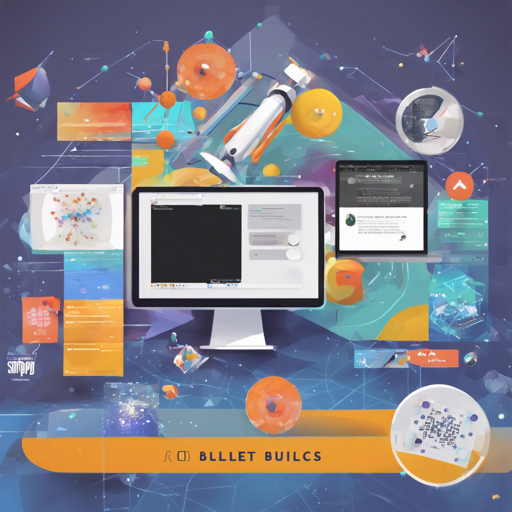The Bullet Physics SDK is a powerful tool for those engaged in real-time collision detection and multi-physics simulation across a variety of fields including VR, gaming, visual effects, robotics, and machine learning. This guide will walk you through the installation, usage, and troubleshooting of Bullet Physics to get your projects off the ground swiftly.
Installation Steps
To get started, you will need to install the Bullet Physics SDK. You have a couple of options to choose from: using vcpkg or premake. Below are the instructions for both methods:
Using vcpkg
- Clone the vcpkg repository:
git clone https://github.com/Microsoft/vcpkg.gitcd vcpkg.bootstrap-vcpkg.sh.vcpkg integrate install.vcpkg install bullet3Using Premake
For users who prefer premake:
- On Windows, run:
build_visual_studio_vr_pybullet_double.bat.build_cmake_pybullet_double.shUsing PyBullet
Once Bullet is installed, it’s highly recommended to use the PyBullet Python bindings for an enhanced experience, especially for robotics and VR. The installation of PyBullet is as simple as:
pip install pybulletRunning Examples
After the installation, you can enjoy the sample tasks provided by PyBullet. Run the following commands to set up:
python3 -m pybullet_envs.examples.enjoy_TF_AntBulletEnv_v0_2017maypython3 -m pybullet_envs.examples.enjoy_TF_HumanoidFlagrunHarderBulletEnv_v1_2017julpython3 -m pybullet_envs.deep_mimic.testrl --arg_file run_humanoid3d_backflip_args.txtUnderstanding Bullet Physics with an Analogy
Consider Bullet Physics as a stage for a theatre performance. The set represents the world you create in your simulation, while the actors on stage represent the objects and characters in your environment. Just as a stage requires precise directions for each actor to perform their roles in harmony, Bullet Physics requires a set of rules and simulations to manage how these objects interact with one another.
When you write a script (code) for a play (simulation), you define how each actor moves and reacts – similar to how you define physics properties such as position, collision, and response in Bullet. The better the script is written, the smoother the performance will go, just as well-crafted code results in a seamless simulation experience.
Troubleshooting Tips
If you encounter any issues while setting up or running Bullet Physics, consider the following troubleshooting ideas:
- Check that your C++ compiler supports C++ 2003.
- Ensure that you have the required permissions to install packages if you’re using pip.
- If using PyBullet, verify that you are using Python 3.x and have installed PyBullet correctly.
- Look into the compatibility of your GPU if you are attempting to run on OpenCL.
- If issues persist, consider visiting the PyBullet forums for community assistance.
For more insights, updates, or to collaborate on AI development projects, stay connected with fxis.ai.
Conclusion
At fxis.ai, we believe that such advancements are crucial for the future of AI, as they enable more comprehensive and effective solutions. Our team is continually exploring new methodologies to push the envelope in artificial intelligence, ensuring that our clients benefit from the latest technological innovations.

